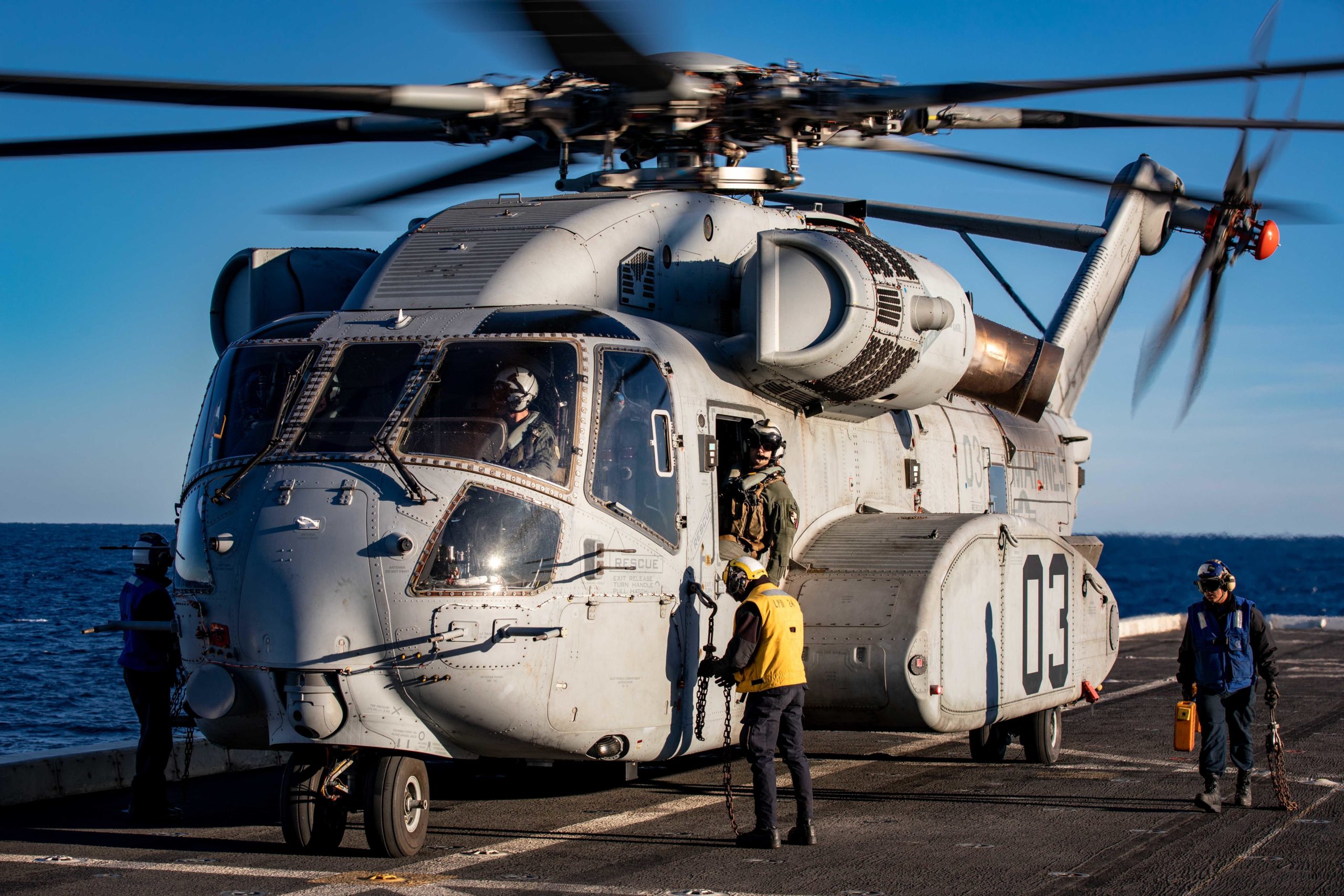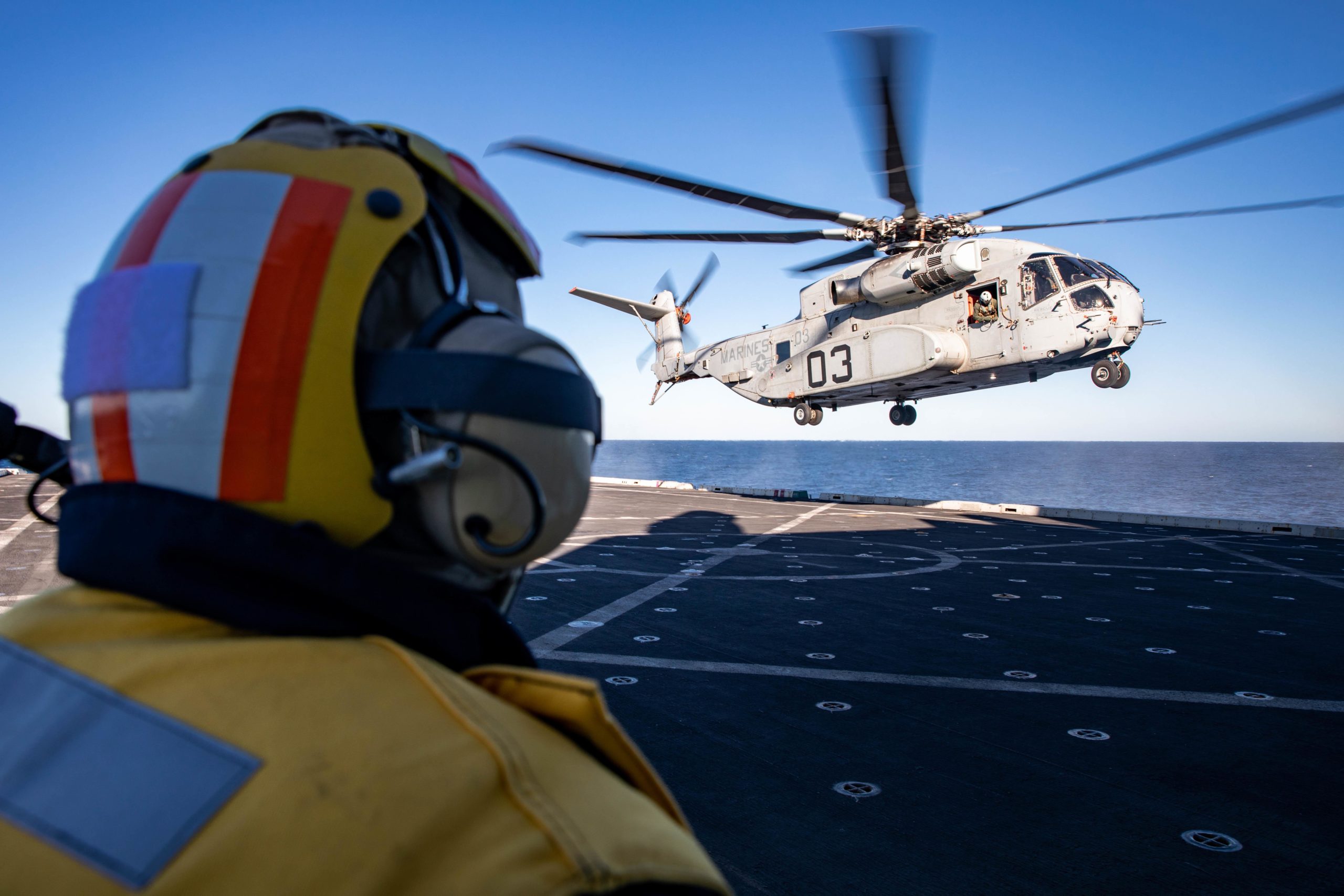Round 2 Completed in CH-53K Sea Trials
The CH-53K King Stallion completed five full days and nights of envelope expansion testing at sea in the Atlantic last month. The aircraft continued testing in a modern naval environment following initial successful sea trials in June, 2020.
A diverse team of 105 personnel from Air Test and Evaluation Squadron Two One (HX-21), H-53 Heavy Lift Helicopters Program Office (PMA-261), Marine Heavy Helicopter Squadron 461 (HMH-461), Marine Operational Test and Evaluation Squadron One (VMX-1), and Sikorsky pilots, engineers, technicians and maintainers successfully accomplished this second set of sea trials for the CH-53K. Sea trial testing took place aboard the USS Arlington, a San Antonio-class amphibious transport dock (LPD24), operated by the U.S. Navy.
“The latest sea trials were another great success for the CH-53K program,” said Col. Kate Fleeger, PMA-261 program manager. “Data analysis has shown a greater CH-53K LPD launch and recovery envelope than that of the CH-53E.”
Sea trials are a series of tests to evaluate the performance of the aircraft at sea. Tests performed during the event included: launch and recovery; rotor start and shutdown; blade fold; and shipboard compatibility testing – all in increasing wind speed and varying wind directions relative to the aircraft.

According to Sarah Naiva, Assistant Program Manager for Test and Evaluation for the CH-53K, there are many variables potentially impacting a high-profile, high-risk event such as sea trials.
“We made the stars align for us with months of exhaustive planning and tireless collaboration,” said Naiva. “The joint team overcame numerous challenges, such as tumultuous seas, and their hard work and dedication will provide the fleet with greater flexibility to launch and recover the CH-53K in more severe weather conditions and mission scenarios where an LPD has limited steering.”
Ship compatibility testing includes towing the aircraft around the deck and in the hangar, performing maintenance while aboard the ship, ensuring the aircraft fits in all the locations it needs to around the ship deck and hangar and evaluating chain/tie-down procedures.
Ultimately, the results of these tests will enable the CH-53K to provide critical ship-to-shore heavy lift capability for future Marine Expeditionary Unit deployments,” said Naiva.
The Marine Corps continues to execute its transition from the CH-53E to the CH-53K and is on schedule to declare Full Operational Capability in FY2029.
This article was published by NAVAIR on 5 April 2023.
Featured Photo: An Aviation Boatswain’s Mate, assigned to the San Antonio-class amphibious transport dock ship USS Arlington (LPD 24), observes a CH-53K King Stallion helicopter landing aboard Arlington, Feb. 14, 2023. The King Stallion is a heavy-lift cargo helicopter that was undergoing sea trials as the next evolution of the CH-53 series helicopters that have been in service since 1966. (U.S. Navy photo by Mass Communication Specialist 1st Class John Bellino).
Also, see the following:
The CH-53K and USMC Transformation: Preparing for Entry into Service

